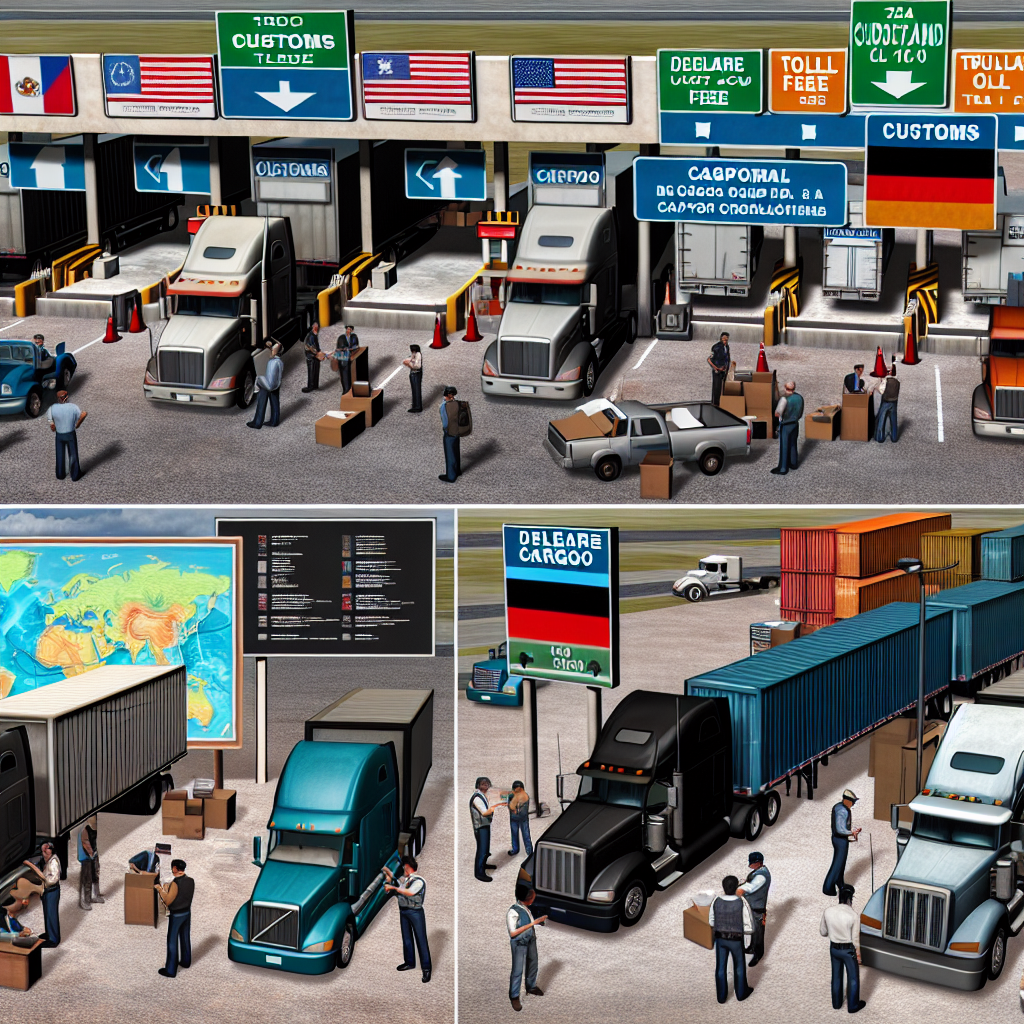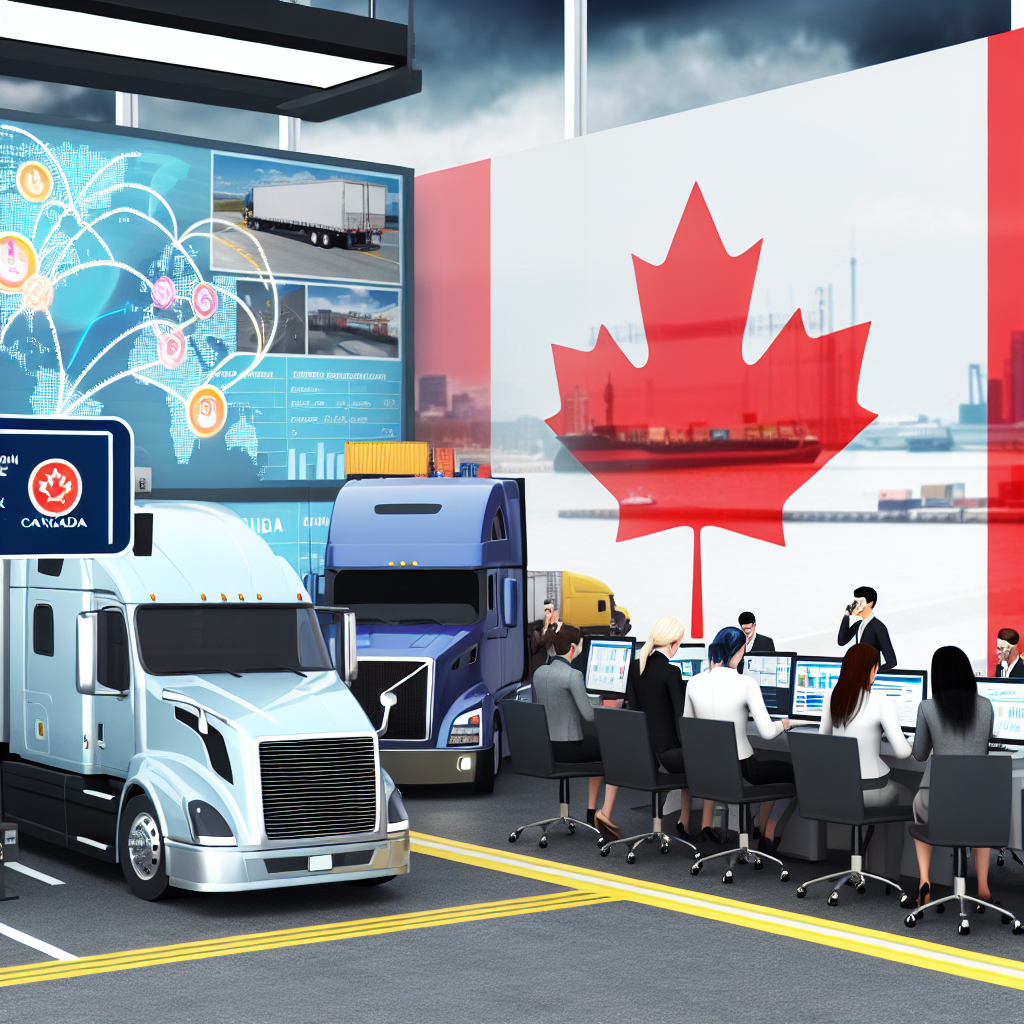The Truckload Carriers Association (TCA) Annual Meeting is not just a gathering; it is a vital platform for addressing the pressing cross-border regulatory issues that impact the trucking industry in both Canada and the United States. Scheduled for November 19 in Mississauga, Ontario, this year’s theme centers on the significant challenges faced by trucking professionals navigating complex regulations that can hinder efficient operations and commerce. As the industry grapples with ever-evolving federal rules and economic uncertainties, the TCA Annual Meeting serves as a crucial forum for stakeholders ranging from fleet operators to regulatory representatives to discuss solutions and strategies. This event promises to be an enlightening experience for all participants, focusing on the intertwined nature of regulatory updates and the future landscape of trucking across borders.

Current Federal Regulations Affecting the Trucking Industry
The trucking industry is currently grappling with a complex framework of federal regulations that directly affect operations, especially in cross-border scenarios. Key developments in legislative policies have emerged throughout 2023 and beyond.
Unified Registration System
Starting October 1, 2025, the Federal Motor Carrier Safety Administration (FMCSA) will eliminate separate Motor Carrier (MC) numbers in favor of a single USDOT number system. This regulation aims to streamline the registration process and combat issues like identity fraud and double brokering. Carriers must update all related documentation to reflect this change.
Enhanced Safety Technology Requirements
The National Highway Traffic Safety Administration (NHTSA) has introduced a new mandate for Automatic Emergency Braking (AEB) systems to be fitted in new passenger vehicles and light-duty trucks by 2029. For heavy-duty vehicles, compliance with both Electronic Stability Control (ESC) and AEB will be obligatory, with deadlines set for Class 7 and 8 vehicles by 2027 and smaller trucks by 2028.
Mandatory English Proficiency
Beginning June 25, 2025, all commercial drivers must demonstrate proficiency in spoken and written English to operate legally, which is crucial for operations involving cross-border routes. This requirement aims to reduce miscommunication risks that may lead to safety incidents.
Broker Transparency
Current regulations now demand that freight brokers increase their surety bonds from $10,000 to $75,000. They are also required to maintain and share electronic transaction records with carriers, addressing issues of transparency and accountability within the industry.
Impact of Tariffs
In September 2025, tariff increases of 25% on imports from Canada and Mexico have profoundly affected trucking rates. Rates for dry van transportation surged by 18%, while refrigerated truck rates increased by 35%. This has led to elevated shipping costs, and the financial strain has prompted some carriers to reconsider fleet upgrades amidst inflationary pressures.
Compliance Reviews and Safety
The FMCSA has faced criticism for delayed compliance reviews, particularly for carriers from Mexico. Recommendations have emphasized the need for timely assessments to identify unsafe carriers before they operate across U.S. borders.
Financial and Operational Challenges
Adjustments to civil penalties and the rising costs of compliance necessitated by new safety equipment regulations have added to the financial and operational burden on trucking companies. These complexities highlight the pressing need for a proactive approach to navigate the evolving regulatory landscape successfully.
These developments illustrate a regulatory environment that is constantly changing, necessitating that trucking companies remain vigilant and adaptable to succeed in cross-border operations.
| Regulation Type | Impact on Operations | Examples of Affected Trucking Companies |
|---|---|---|
| Hours of Service Regulations | Limits on driving hours, affecting delivery schedules | Bison Transport, Kriska Transportation |
| Vehicle Emissions Standards | Compliance costs for diesel engine updates | Lion Force, Équité Association |
| Cross-Border Regulations | Increased paperwork and compliance time | Eassons Transportation Group, Manac |
| Safety Compliance Reviews | Delays in approval affecting operational viability | ISB Global Service, NorthBridge Insurance |
| Insurance Requirements | Higher premium costs impacting operational budgets | Truckload Carriers Association |
| Weight and Load Restrictions | Limits on cargo capacity affecting revenue potential | Bison Transport, Manac |
The trucking industry faces several significant risks and challenges that affect its operations and economic performance. Here are the main industry risks and recent economic trends impacting the trucking sector in Canada and the U.S.:
Industry Risks
- Economic Downturns:
Economic changes can drastically impact freight demand. Times of recession can lead to lower consumer spending, which reduces freight volumes. This results in decreased revenue for trucking companies. The slow recovery from the pandemic continues to create market uncertainty. - Technological Disruption:
Advances in technology bring both challenges and opportunities. Electric trucks, autonomous vehicles, and advanced fleet management can increase efficiency. However, they also demand significant investment. Traditional operators may struggle to adapt, risking obsolescence in a changing market. - Regulatory Compliance Challenges:
Trucking companies must navigate complicated regulations from federal and provincial levels. Compliance with safety, emissions, and labor regulations can be costly and time-consuming. Not meeting these requirements can lead to fines or loss of business. New regulations calling for enhanced safety measures may further strain resources.
Recent Economic Trends Affecting the Trucking Sector
- Freight Volume and Revenue Change:
In 2023, U.S. freight volumes decreased, indicating tightening demand. However, overall industry revenue grew, showing that higher rates might be offsetting volume losses. In Canada, growth in local freight trucking revenue remains slow, emphasizing the need for effective cost management. - Driver Shortage:
Both Canadian and U.S. trucking industries face a persistent driver shortage. This gap may worsen in coming years. Companies must attract new talent and explore automation as potential solutions. - Trade and Tariff Sensitivity:
Changing regulations, including tariffs on imports, heighten operational costs for trucking firms. These tariffs not only affect transportation costs but also have broader supply chain implications, potentially passing costs onto consumers. - Increasing Adoption of Sustainable Practices:
Stricter environmental regulations lead many companies to invest in green technologies. The move towards sustainability is crucial for compliance but requires substantial upfront costs. Firms that do not adapt may lose competitive ground as consumer demand for sustainable practices surges.
These industry risks and economic trends highlight the necessity for trucking companies to be agile in their business practices. Investing in technology and effectively managing economic pressures is essential to stay competitive in this evolving landscape.

Panel Discussion Insights: Economic Trends and Risk Management
At the recent industry panel discussion featuring Arun Rebello and notable leaders from the trucking community, significant insights were shared regarding the evolving economic landscape and effective risk management strategies. Although specific quotes from Rebello were not recovered, several key points emerged.
Economic Trends Affecting the Industry
-
Total Cost of Risk (TCOR):
David Bauer, Vice President for State & Tax Policy at the American Trucking Associations, emphasized the need to understand TCOR, which not only includes insurance premiums but also encompasses retained losses, administrative and transaction costs, and reputational impacts. With economic forecasts signaling a potential recession and escalated insurance rates, Bauer stressed the necessity for fleets to be proactive in managing their costs to preserve profitability.
-
Market Adaptation:
Hamish Woodrow, Director of Strategic Analytics at Motive, highlighted that many fleets are diversifying income streams to deal with market volatility. He noted challenges such as port disruptions, which can reduce operational efficiency, while also presenting opportunities for growth. Woodrow underscored technology’s role in enhancing visibility and providing crucial insights for building more resilient business models.
Risk Management Strategies
-
Operational Efficiency:
Karol Smith from Estes Forwarding described how firms are tightening their operations through careful scrutiny of expenses and optimizing freight routes. By employing geofencing and performance-monitoring software, these companies aim to enhance productivity and control costs effectively.
-
Insurance and Risk Mitigation:
A report from Árachas Group indicated that customized insurance programs and proactive risk management can alleviate rising insurance premiums in the trucking sector. The integration of robust safety protocols, driver training, and telematics is recommended to reduce claim frequencies and secure better insurance rates.
Conclusion
The panel discussions encapsulated the necessity of adapting to the contemporary economic climate along with integrating solid risk management practices. As the industry braces for potential economic fluctuations, leveraging technology and maintaining an agile approach will be vital for trucking companies to navigate these trends successfully.
In conclusion, the Truckload Carriers Association (TCA) Annual Meeting serves as a pivotal opportunity to address the pressing cross-border regulatory issues that have a considerable impact on the trucking industry. By focusing on current developments in federal regulations, industry risks, and economic trends, the TCA plays a crucial role in guiding stakeholders through the complexities of today’s regulatory environment.
The event not only fosters collaboration among trucking companies, regulatory bodies, and economic experts but also emphasizes the importance of proactive engagement to shape a more streamlined framework for cross-border operations. As the industry continues to evolve, the enhancement of cooperation among all stakeholders is essential for ensuring efficiency, compliance, and competitive viability in the face of ongoing challenges.
The trucking industry is experiencing a noteworthy shift towards the adoption of technological solutions which are essential for addressing regulatory challenges and enhancing operations across borders.
Key Adoption Trends in the Trucking Industry
-
Digital Transformation:
- About 73% of trucking companies have embraced digital tools to improve fleet management, which is instrumental in ensuring compliance with increasingly complex regulations source.
- An impressive 80% of industry players consider digital safety protocols vital for maintaining regulatory compliance source.
-
Data Analytics and AI Integration:
- Approximately 80% of trucking firms recognize the importance of data analytics for operational improvements, enabling them to make data-driven decisions that align with regulatory expectations source.
- Around 45% of companies have begun implementing AI-powered predictive maintenance systems, thus anticipating issues before they escalate source.
-
Cross-Border Operations:
- For the U.S.-Canada border, roughly 5.5 million trucks crossed into the U.S. from Canada in 2023, with the majority of freight continuing to its destination without changing drivers source.
- Similarly, about 7.4 million trucks crossed from Mexico to the U.S. during the same period, often requiring loads to be transloaded due to differing regulations source.
Challenges in Adoption
Despite the positive trends, several challenges persist:
- Data Quality and Security: Approximately 19% of transport and shipping companies cite data quality and security as significant barriers to AI investment source.
- Technical Expertise: Around 13% of firms report a lack of in-house technical expertise required to implement AI solutions effectively source.
Conclusion
The statistics underscore a proactive approach by the trucking industry in leveraging technology to meet regulatory demands and enhance cross-border logistics. However, addressing challenges like data quality and workforce expertise will be critical to sustaining the momentum of technological adoption in this evolving landscape.
User Adoption Data
The trucking industry is experiencing a noteworthy shift towards the adoption of technological solutions which are essential for addressing regulatory challenges and enhancing operations across borders.
Key Adoption Trends in the Trucking Industry
-
Digital Transformation:
- About 73% of trucking companies have embraced digital tools to improve fleet management, which is instrumental in ensuring compliance with increasingly complex regulations source.
- An impressive 80% of industry players consider digital safety protocols vital for maintaining regulatory compliance source.
-
Data Analytics and AI Integration:
- Approximately 80% of trucking firms recognize the importance of data analytics for operational improvements, enabling them to make data-driven decisions that align with regulatory expectations source.
- Around 45% of companies have begun implementing AI-powered predictive maintenance systems, thus anticipating issues before they escalate source.
-
Cross-Border Operations:
- For the U.S.-Canada border, roughly 5.5 million trucks crossed into the U.S. from Canada in 2023, with the majority of freight continuing to its destination without changing drivers source.
- Similarly, about 7.4 million trucks crossed from Mexico to the U.S. during the same period, often requiring loads to be transloaded due to differing regulations source.
Challenges in Adoption
Despite the positive trends, several challenges persist:
- Data Quality and Security: Approximately 19% of transport and shipping companies cite data quality and security as significant barriers to AI investment source.
- Technical Expertise: Around 13% of firms report a lack of in-house technical expertise required to implement AI solutions effectively source.
Conclusion
The statistics underscore a proactive approach by the trucking industry in leveraging technology to meet regulatory demands and enhance cross-border logistics. However, addressing challenges like data quality and workforce expertise will be critical to sustaining the momentum of technological adoption in this evolving landscape.

The Truckload Carriers Association (TCA) Annual Meeting is not just a gathering; it is a vital platform for addressing the pressing cross-border trucking regulations and regulatory issues that impact the trucking industry in both Canada and the United States. Scheduled for November 19 in Mississauga, Ontario, this year’s theme centers on the significant trucking industry challenges faced by professionals navigating complex regulations that can hinder efficient operations and commerce. As the industry grapples with ever-evolving federal trucking regulations and economic uncertainties, the TCA Annual Meeting serves as a crucial forum for stakeholders ranging from fleet operators to regulatory representatives to discuss solutions and strategies. This event promises to be an enlightening experience for all participants, focusing on the intertwined nature of regulatory updates and the future landscape of trucking across borders.
Current Federal Regulations Affecting the Trucking Industry
The trucking industry is currently grappling with a complex framework of federal trucking regulations that directly affect operations, especially in cross-border scenarios. Key developments in legislative policies have emerged throughout 2023 and beyond.
These developments illustrate a regulatory environment that is constantly changing, necessitating that trucking companies remain vigilant and adaptable to succeed in cross-border operations.
Industry Risks
The trucking industry faces several significant risks and challenges that affect its operations and economic performance. Here are the main industry risks and recent economic trends impacting the trucking sector in Canada and the U.S.:
Recent Economic Trends Affecting the Trucking Sector
These industry risks and economic trends highlight the necessity for trucking companies to be agile in their business practices. Investing in technology and effectively managing economic pressures is essential to stay competitive in this evolving landscape.
In conclusion, the Truckload Carriers Association (TCA) Annual Meeting serves as a pivotal opportunity to address the pressing cross-border trucking regulations that have a considerable impact on the trucking industry. By focusing on current developments in federal trucking regulations, industry risks, and economic trends, the TCA plays a crucial role in guiding stakeholders through the complexities of today’s regulatory environment.
As the trucking industry adapts to new federal regulations, these changes inherently shape the broader landscape of industry risks and economic dynamics. The complexities introduced by regulatory compliance not only impact operational capabilities but also influence the economic viability of trucking companies. Moving forward, it is essential to consider how these regulatory pressures intertwine with potential risks, such as economic downturns, and evolving trends that define the future of the trucking sector.
Case Study Examples Enhancing Panel Discussion Insights
-
Averitt’s Cross-Border Automotive Logistics Optimization
Averitt tackled the complexities of a supply chain serving an automotive manufacturer that struggled with inefficiencies stemming from collaboration with over 30 vendors and costly warehousing needs. They introduced a streamlined cross-dock model that eliminated unnecessary warehousing and enabled efficient daily pickups with Advanced Shipping Notice (ASN) scanning. This approach not only significantly accelerated delivery times but also achieved substantial cost reduction, creating a robust and scalable solution that enhanced the reliability of their supply chain.
-
Kuehne+Nagel’s Transborder Road Logistics Solution
Another illustrative example involves Kuehne+Nagel working with a prominent auto-parts manufacturer. Initially seeking greater control over its supply chain, the company partnered with Kuehne+Nagel to utilize their Transportation Management System (TMS). This integration allowed for improved rate comparisons, better selection of carriers, and optimized routing. Additionally, Kuehne+Nagel provided services encompassing carrier and contract management, freight bill auditing, and overall spend management, leading to marked improvements in service levels and cost efficiencies for the manufacturer.
-
CrossCountry Logistics Inc.’s Multi-State Compliance Strategy
CrossCountry Logistics faced challenges as it expanded operations across multiple states, needing to navigate through a myriad of varying regulations. To address this, the company enlisted consultants to develop a multi-state compliance strategy, implementing state-specific training for drivers and dispatchers. This proactive initiative ensured adherence to diverse regulations, thereby mitigating risks and significantly enhancing operational efficiency across the board.
These case studies exemplify how trucking companies can successfully manage cross-border regulatory challenges through innovative logistics solutions, technology integration, and comprehensive compliance strategies. They vividly illustrate the real-world implications of the strategies discussed by the panel, enriching the overall narrative and emotional engagement for the attendees.


